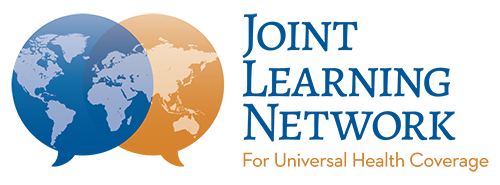Leveraging monitoring and information systems for output-based provider payment
Contributors: Agnes Munyua, Batbayar Ankhbayar, Humberto Silva, Jocelyn Maala, and Kaija Kasekamp. This blog is produced by the Primary Health Care Financing and Payment Collaborative.
Sound and reliable information is the foundation of decision-making across all health system building blocks and is essential for health system policy development and implementation, governance and regulation, health research, human resources development, health education and training, service delivery and financing. The health information system provides the underpinnings for decision-making and has four key functions: data generation, compilation, analysis and synthesis, and communication and use. The health information system collects data from the health sector and other relevant sectors, analyses the data and ensures their overall quality, relevance, and timeliness, and converts data into information for health-related decision-making.
Information and monitoring systems are a critical foundation for a strong provider payment system. Countries need to ensure that their purchasers are positioned and empowered to be strategic purchasers who contribute to the overall health system objectives and in turn, advance universal health coverage. Good governance, coupled with effective information and monitoring systems, allows purchasers to make evidence-based decisions on allocation of resources.
In a two-part webinar series on December 1st and December 15th , the Joint Learning Network’s Primary Health Care Financing and Payment Collaborative facilitated a virtual discussion on countries’ best practices and lessons learned on strengthening governance arrangements and information and monitoring systems for output-based provider payment. The monitoring and information systems session included representatives from Argentina, Estonia, Mongolia and the Philippines. Key lessons learned are summarized in this blog:
1. Setting clear objectives for effective monitoring and information systems
Setting clear objectives ensures that stakeholders are clear on the purpose of the monitoring and information systems, what data is being collected, how the data is collected, analyzed and used to advance decision making. For example, Estonia has automated most government functions including the Estonia Health Insurance Fund (EHIF). EHIF has reached a high level of coverage and monitors coverage and utilization of services daily. To reach the underserved, Estonia set an objective to target vulnerable populations and to reach them with primary health care services. Setting a clear objective helped Estonia identify indicators aligned with these objectives. In the Philippines, a new UHC law decreed immediate eligibility for all Filipinos to the National Health Insurance Program.. To expand coverage, Philhealth has designed PhilHealth Konsultasyong Sult at Tama (Philhealth Konsulta) as an initial step towards adopting a comprehensive approach to delivering primary health care. This has necessitated the design of a system that will allow them to capture information to track the coverage and utilization of these new benefits.
2. Start with what you have, then course correct and evolve
Once objectives have been set, the next step is for countries to develop systems that gather data and track progress against set objectives. Mongolia started off with excel-based tools that evolved over time to a more sophisticated automated system of data collection to reduce the reporting burden on stakeholders. As the system became more sophisticated, there was a need to also simplify and streamline the number of indicators. The number of indicators has reduced from more than 100 to 27 high-powered indicators that give a broad overview of the health system. PhilHealth developed an interim system called ‘E-Konsulta,’ which has core functions of managing the beneficiaries’ health information and provider management. Philhealth considers transitioning to a third-party system with the hope of evolving further into something better for the future that integrates all health systems data.
3. The quality of the decisions is only as good as the quality of the data
It goes without saying that data quality and timeliness greatly impacts decision makers ability to make the right decisions at the right time. In Argentina, Estonia, and Mongolia data from monitoring and information systems are integral components to calculating financial incentives to providers. In Mongolia, dashboards are used as visual aids to support decision making. To improve the quality of data, in Argentina, rewards and sanctions were set to encourage good quality data from regional governments and providers. Harmonizing tools and automating as much as is feasible can help reduce the reporting burden on providers and improve the quality of data. For example, in Estonia, data from the electronic medical records system is integrated with the quality bonus system to avoid further data collection at the provider level. Further, having clear system requirements and supporting providers to develop them can be an avenue to improve automation and data quality. In Estonia, provider contracts clearly stipulate the information system requirements and mandate that all claims are submitted electronically to improve timeliness and accuracy of data.
Health systems are dynamic and it’s important for a country to develop monitoring and information systems that pivot and evolve as objectives change – this can look vastly different for each country. As countries aim to develop their monitoring and information systems, they can aim to align on objectives across stakeholders, use data to determine whether objectives are being met and if not, course correct and evolve. What works in one country may not work in another context, so countries should be flexible and open to change as they continue to progress towards universal health coverage (UHC).
